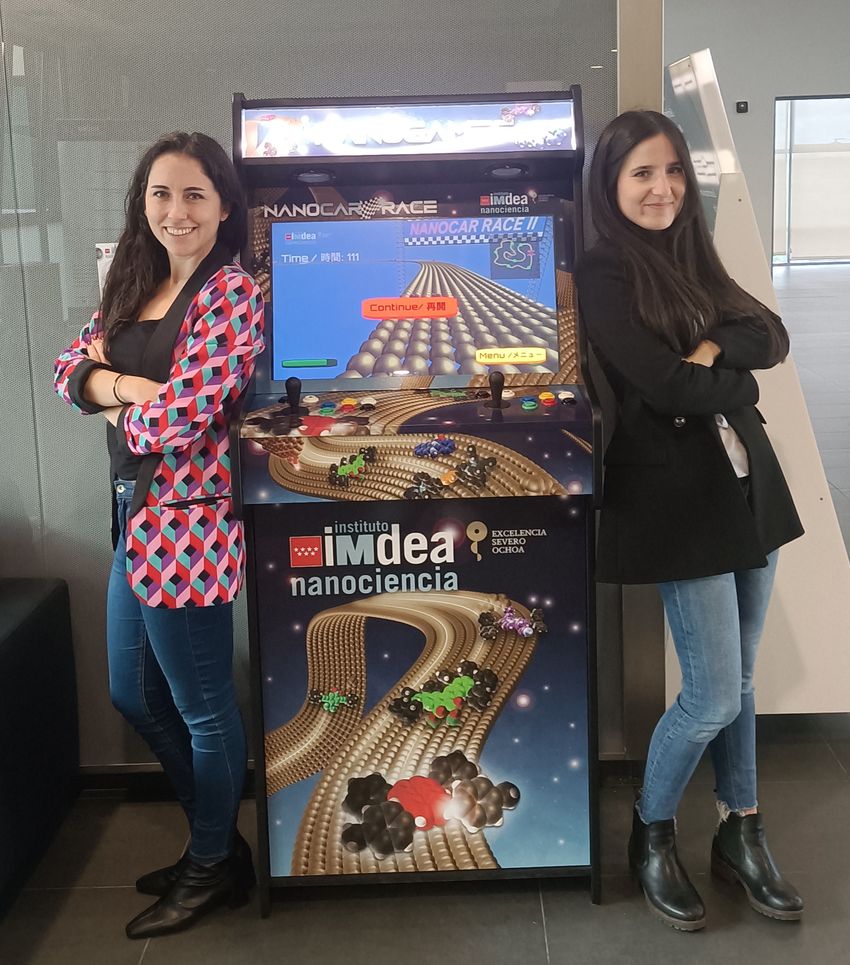As a biophysics graduate student at IMDEA Nanoscience Institute, Patricia Bondia planned to become a principal investigator. However, in 2017, she began using her hobby of creating 3D illustrations to help explain her research, eventually designing art for her colleagues as well. As her ideas for communicating science expanded, she explored animation by enrolling in a course that also taught video game design. Although the interactive medium caught her attention, she shelved this skill and focused on science illustration that was easier for her to do at the time. As she shared her designs on LinkedIn, she gained more interest in her work from other scientists, an opportunity emerged to dust off her gaming design talents.

Patricia Bondia and Melek Villanueva, two science illustrators, teamed up to create Nanocar Racing: The Game as a way to engage general audiences with the science behind the smallest race in the world.
Scientific Videogames
How did you get into making video games?
There is a competition, called Nanocar Race, where research teams design molecules that they then race along tracks by moving them with the tip of a scanning tunneling microscope. A team from IMDEA Nanoscience Institute reached out to me about creating a visual to promote the event and communicate their science outreach work through the competition. I realized that the scientists had already gamified science by turning their research into a race, and I saw it as a perfect opportunity to explore a scientific video game. I reached out to my colleague, Melek Villanueva, and we created Nanocar Racing: The Game.
We originally designed the game as a web application. For their racing character, players select a molecule based upon real compounds developed by teams of scientists. Using the keyboard arrow keys to steer, they drive this molecular car around a gold track, avoiding obstacles as best as they can to prevent their car from facing damage. If they are fast enough, the player will rank on the game’s leaderboard.
Eventually, this team from the IMDEA Nanoscience Institute asked about translating this web application into a full-scale arcade game that they could bring to competition events to engage audiences, so we helped them do that. The game attracts people of all ages and encourages them to ask more questions about the science behind it.

Bondia and Villanueva created The Phage Collection Project as a VR game to engage general audiences with bacteriophages and their role in therapy.
Scientific Videogames
What have you done since this first game?
Following the success of Nanocar Racing: The Game, Villanueva and I jumped into the entrepreneur space in 2023 to establish Scientific Videogames, a company dedicated to gamifying science. We created a prototype virtual reality game to showcase more of our skills, and it has already helped us secure some clients. For example, we created The Phage Collection Project with a group by the same name and Southampton University. Players learn about how phages can be used as treatments in antibiotic-resistant bacteria by stepping into a virtual lab and choosing which phage will treat a patient’s infection. We showed this game at this year’s Royal Society’s Summer Science Exhibition in London. Villanueva and I are also designing another game called Atomic Fusion to teach science concepts to young audiences, and we’re working with educators to develop this for use in classrooms.
This interview has been edited for length and clarity.
